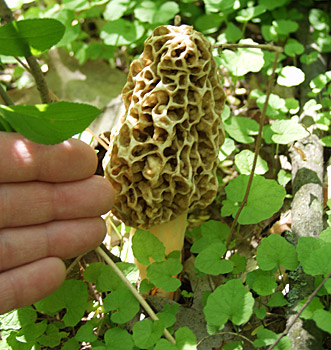
May 14th, 2008
by Jolene Ketzenberger, Indianapolis Star
Stalking the Wily Morel
It must be the thrill of the hunt. What else would inspire me (and plenty of other Hoosiers) to tromp through the woods for hours on a beautiful spring day, not picnicking or admiring the scenery, but poking through underbrush, eyes firmly fixed on the ground?
I was hunting morels, of course, those elusive Hoosier signs of spring. And after my first real hunt recently, I just may be hooked.
Of course it helped that I found plenty of tasty mushrooms to fry up once I got home.
"I'm always so surprised about how wacky people are about wanting to go out, hunt wild mushrooms and eat them," said Wisconsin-based mushroom expert Britt Bunyard. "They definitely have an allure."














